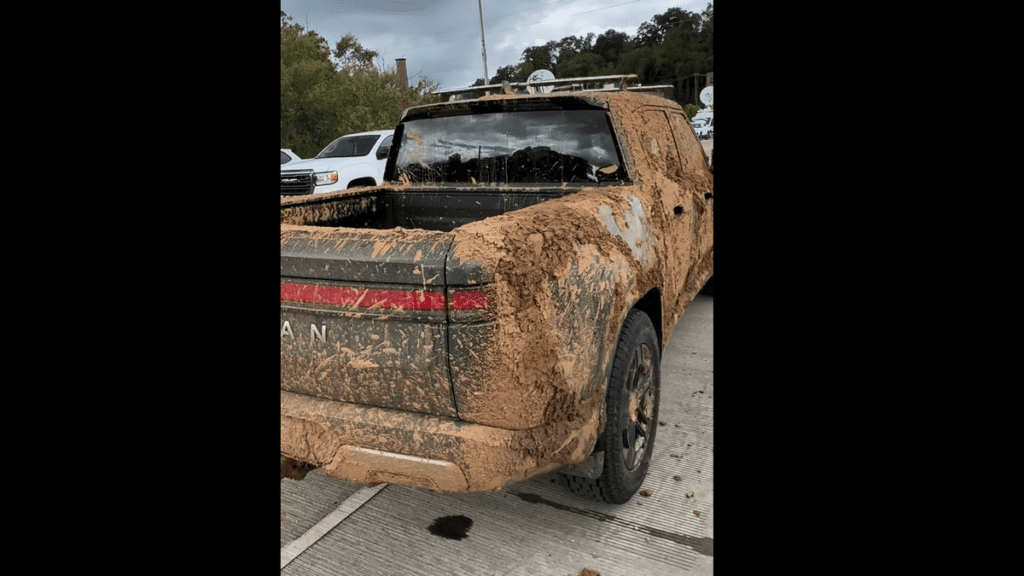Rivian R1T Still Works After Being Swept 100 Yards By Hurricane Helene Flood

Flooding caused by Hurricane Helene devastated entire swaths of the American southeast this week, particularly in the Carolinas. Over a hundred people lost their lives (with the death toll still mounting), infrastructure was wiped off the map and tons of cars were destroyed. Despite the violence of the storm, some vehicles surprisingly made it through the storm unscathed. One of those vehicles was an EV.
Rivian Unveils Trio of New Electric Vehicles
First spotted by InsideEVs via a Facebook post, Joshua Vincent Sauer posted a video speaking to a Rivian owner about how his R1T survived the hurricane flooding. The owner explained he initially parked the truck near the Swannanoa River in Asheville, North Carolina. Due the hurricane, the river’s water level rose and breached the bank, sending disastrous flood waters spilling into the city.
The owner said when he returned to the spot where he’d parked his R1T, he discovered the flood carried the truck 100 yards from its initial parking spot—only 20 yards short of a football field. The R1T was covered in mud as you can see from the video. The owner says he was prepared for the truck to be totaled from water damage. It turns out the R1T was tougher than he thought. From InsideEVs:
The owner says he walked up to the car fully prepared to call is insurance company and report a total loss. But then his friend saw the door handles pop out, a sign that the battery was still working. When he got in the car, the owner says the R1T started up like nothing had happened. He’s since fast-charged it and driven around town and so far noticed no issues.
While a gas powered car and its engine would likely be destroyed or have major damage, the Rivian is still functioning. If you’re wondering how that’s possible, you can chalk it up to the automaker’s engineering. In a statement to InsideEVs, Rivian confirmed that the batteries of their vehicles are sealed for flooding:
In addition to the sealing of our packs, which are verified before vehicle installation, we monitor any exposure to water ingress within our batteries through our electrical isolation features,” the spokesperson told InsideEVs via email. “We actively protect the customer and the vehicle from any further damage in such events. As part of our extensive battery testing, we also run salt spray tests to prove that our corrosion mitigations through the life of our packs are robust. Once again, our isolation monitoring features in our electrical and electronic systems provide adequate detection.
Despite this level of engineering, any kind of vehicle that has been in a flood could still have some kind of damage and should still be checked out by a technician or mechanic. It’s still damn impressive though that a Rivian could withstand flood waters strong enough to move it 100 yards. The story might have been different had saltwater carried the truck however, as saltwater can cause the lithium-ion batteries in electric vehicles to catch fire.



